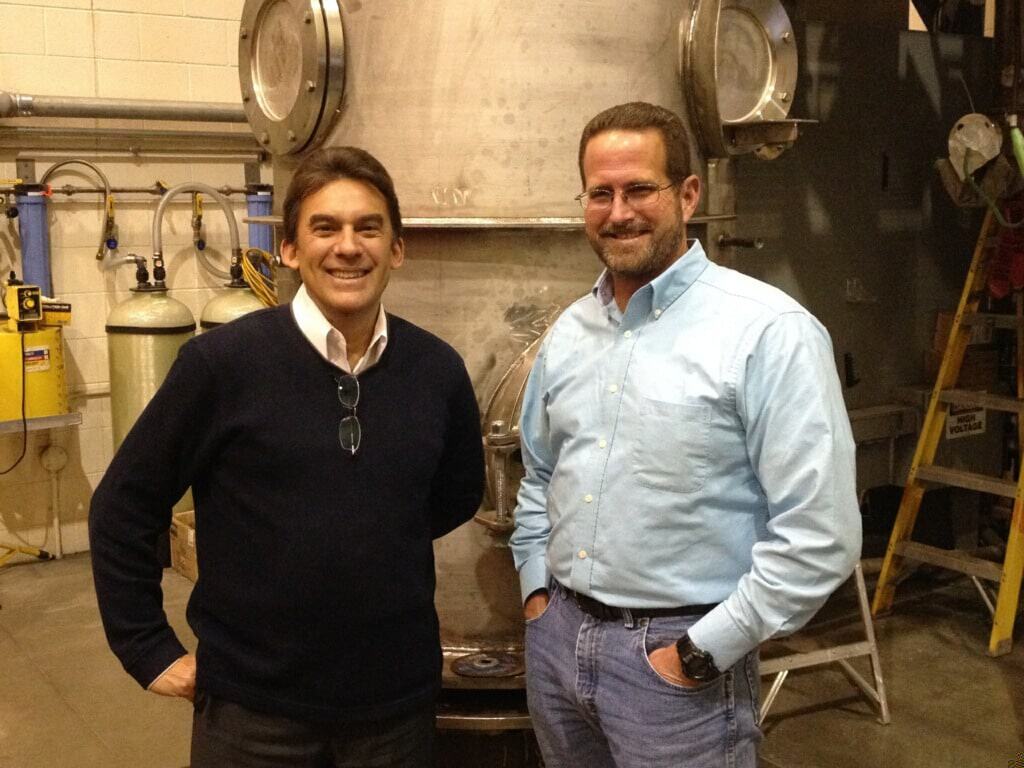Protection for Fuel Elements: Ensuring Saftey
Once Rickover’s team selected water as their primary reactor coolant, other material criteria became readily apparent. Though pure water at room temperature is a relatively benign environment, water at high temperatures is quite corrosive. Because radioactive fission products can be dangerous to human health, prudent reactor designers must devise methods to ensure that the fission products are kept in a carefully controlled location.
Uranium vs Uranium Dioxide
Uranium, in pure metal form, is a chemically reactive metal, especially in a hot water environment. Put simply, uranium rusts rapidly. Allowing fuel material to rust is obviously not a smart engineering decision, particularly since any rust that flaked off would be radioactive and difficult to remove from the piping systems.
Two means of ensuring fuel stability and resistance to corrosion were available. As usual, Rickover and his team covered their technical bets and chose both of them.
Instead of using uranium metal in its pure form, the team decided to use uranium dioxide fuel material. In essence, they chose to use uranium that was already completely “rusted” so that its behavior would be more predictable. Uranium dioxide is not reactive, and it will not dissolve readily even in very hot water.
However, the team was not content with the protection that uranium dioxide offered. To more completely separate the fuel from the coolant, the team decided to sheath the fuel plates in a corrosion resistant covering called cladding.
Stainless or Zircalloy
Of course, deciding to cover the fuel material is one thing. Choosing an appropriate material for the covering is quite another. The material had to be compatible with uranium dioxide, it had to have good resistance to corrosion by hot water, it had to be strong enough to resist the stresses of reactor operation and, most importantly, it had to have a low affinity for neutrons.
There were essentially two groups of materials that seemed appropriate. Various grades of stainless steel had been used in test reactors and demonstrated adequate performance. Stainless steel was a familiar material to most engineers and its methods of manufacture were well developed. Its main disadvantage was that it had a relatively high affinity for neutrons.
The second group of materials, alloys of zirconium, had a much lower affinity for neutrons, but it had other, rather significant disadvantages. Zirconium, though naturally abundant, was not readily available in a useful form.
New Industry
Pure zirconium metal was an exotic material manufactured only in laboratory quantities. In a natural state, it was contaminated with a small portion of hafnium, a metal with very similar chemical properties.
Unlike zirconium, however, hafnium has a strong affinity for absorbing neutrons. The similar chemistry of zirconium and hafnium makes it somewhat complicated to achieve efficient separation. A manufacturing scale process had to be developed to fully separate the zirconium from the hafnium.
Many of the engineers associated with the nuclear submarine development program recommended stainless steel as the Nautilus fuel cladding, apparently because it was a known quantity that was perceived as low risk.
Rickover, looking long term and understanding that the use of stainless steel would mean that far more uranium would be needed to fuel his planned nuclear fleet, directed that zirconium alloys be chosen. Almost by shear will power, he forced the creation of a completely new metals industry that rapidly developed technology allowing production to move from several pounds per year to thousands of tons per year. At the same time, the cost of zirconium dropped from about $300.00 per pound to about $5.00 per pound!
Like many of Rickover’s choices, zirconium and uranium dioxide became nuclear industry standards. A large portion of the world’s reactors use that combination as the basic materials for their fuel elements. The combination has proven itself suitable for use in water cooled reactors, allowing high fuel integrity and low coolant radioactivity levels.

